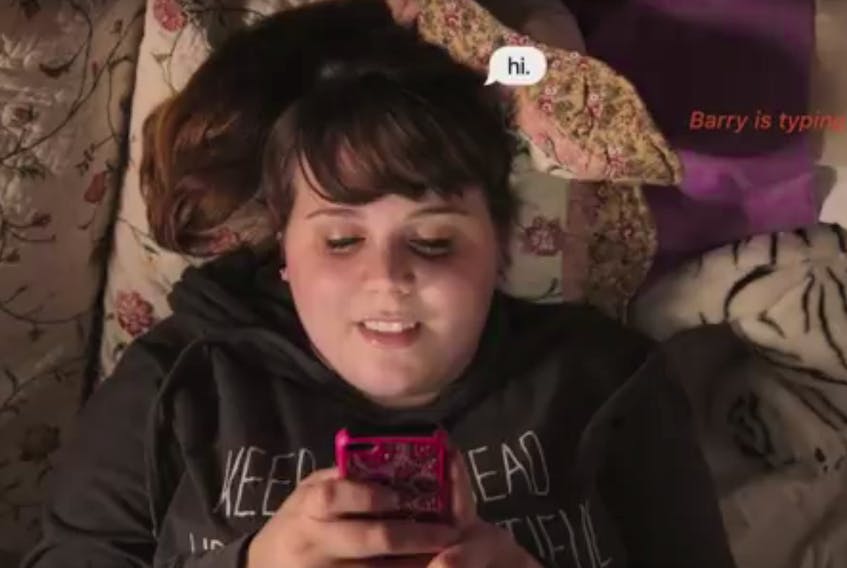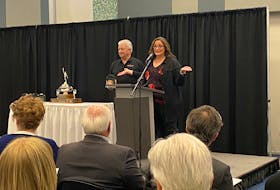How much can you learn from one side of a conversation? When given only partial information, we tend to fill in the blanks, drawing our own logical conclusions for the “halfalogue” – part of humanity’s strange compulsion to avoid feelings of uncertainty by guessing possible outcomes.
This interesting phenomenon is what makes director Joyce Wong’s “Wexford Plaza” so gripping and intellectually stimulating — even though the audience didn’t clue in until at least halfway through.
Delivered in two parts, Wong’s debut narrative feature film loads the audience with fragmented details in Part 1, allowing us to build a plotline that twists in the second part, as the missing information is delivered, piece by piece.
The film screened at The Rooms theatre on Friday, as part of the Scene and Heard Film Industry Conference, presented by the St. John’s International Women’s Film Festival.
After a short introduction and welcome from the festival’s programs co-ordinator Nicole Boggan, the house lights dimmed, bringing us to Part 1: Betty.
We meet Betty (Reid Asselstine) as she is getting dressed for her new job – a security guard at the sleepy Wexford Plaza. Her two male colleagues, Rich (Francis Melling) and Anton (Mirko Miljevic), introduce Betty to other Plaza residents, like bartender Danny (Darrel Gamotin).
Later, while completing her rounds, Betty stumbles upon a drunken Danny, passed out in the bar. Her good deed of helping drunk Danny pass out safely marks the beginning of Betty’s blossoming crush on Danny, whose personal life is more complex than she could imagine.
Upon looking back at the film, it is hard to tease the plotline without completely giving away all the details. That is exactly what makes Wong’s film so interesting — by having two characters deliver two separate but intricately entangled narratives, the storyline we build in Part 1: Betty shows a different reality from the story told in Part 2: Danny.
In this second act, we learn this character’s backstory, his relationship with the Plaza and its inept security team, of Danny’s girlfriend Celine (Ellie Posadas) and how Betty’s new presence at the Wexford Plaza affects his life.
We connect the puzzle pieces of the characters’ linked stories, as the film flashes through familiar scenes — scenes we’ve seen before, but from a different angle.
In a Q&A after the film, cinematographer Maya Bankovic was asked by an audience member about the challenge of achieving continuity in the two parts of the film.
Bankovic explained that these reused scenes were not originally shot with the intention of being repeated. This came as a surprise, as the juxtaposition of scenes from Betty and Danny’s perspective appeared seamless. Bankovic talked about the importance of shooting wide establishing shots — a solid trick of the trade for aspiring cinematographers to remember.
“Wexford Plaza” also employs an interesting technique that is becoming more and more common in film – the use of cellphones and texting. Showing the content of text-based conversations on screen puts the audience on the same level of the characters, as they interpret voiceless, toneless conversation together.
Here’s an easy-to-interpret text-based statement: If “Wexford Plaza” comes to a theatre near you, go see it.









